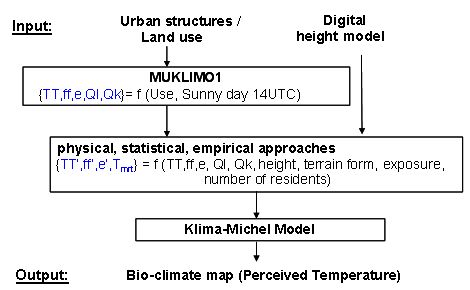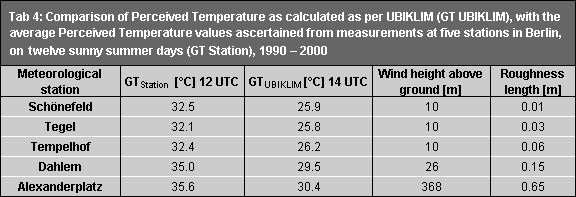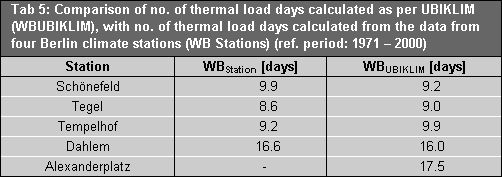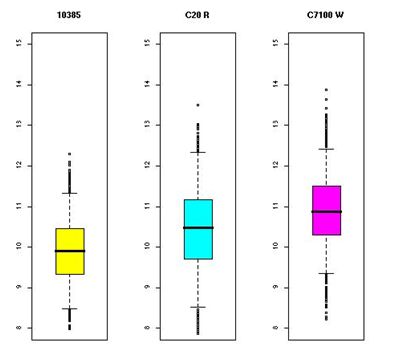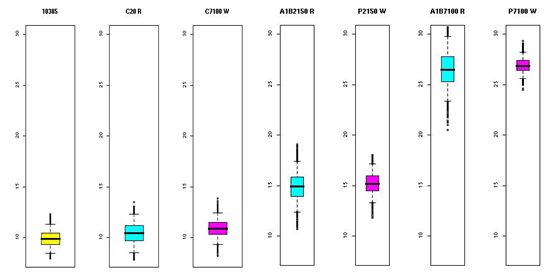Evaluation of thermal load situations can be carried out using various criteria. “The most frequently used is Fanger’s Comfort Equation (1972), and the Perceived Temperature (PT) calculated from it, by means of which the thermal effect complex is determined” (VDI 2008).
The urban bio-climate model UBIKLIM (Urban Bio-Climate Model) is a model method which builds upon those criteria. It was developed for practical application in urban planning by the Deutscher Wetterdienst (DWD), and has been applied in Berlin since 1996 to assess the thermal situation of a typical summer’s day (see SenSUT 1998).
The unusual methodological-technical feature of UBIKLIM was the development of a projection of the bio-climate for time periods subject to climatic change, i.e., over the next 30 – 70 years. Since no standardized methods yet exist for this purpose, the results presented here regarding the application of UBIKLIM in the context of climate projections should be considered as estimates of the future development of the climate. Based on climate projections, climate change scenarios which represent possible plausible developments of the climate in the future can be designed. They cannot, however, be treated as exact forecasts or even as weather forecasts (UBA; German only).
Input Quanta and Procedures at UBIKLIM
As input quanta, UBIKLIM needs not only a high-resolution height model, but also suitable land use information. For this purpose, the area under examination is subdivided into a finite number of sections with the same or similar uses. Built-up areas are further subdivided and clearly characterized according to degree of soil sealing, proportion of built-up areas, building height, number of buildings per unit of area, and proportion of green space. Using these input data, UBIKLIM calculates the meteorological quanta for the entire area under examination at a height of 1 m above ground on a cloudless, low-wind summer’s day, in several steps – primarily by using the 1-dimensional urban climate model MUKLIMO_1 – and then analyses the results pixel by pixel using the Klima-Michel Model (see flow chart, Fig. 5). The resolution of the resulting bio-climate map is 10 to 25 metres.
UBIKLIM permits ascertainment of local differences in the bio-climate. However, these results do not provide any reference to the regional climate, and thus do not provide the basis for absolute information.

